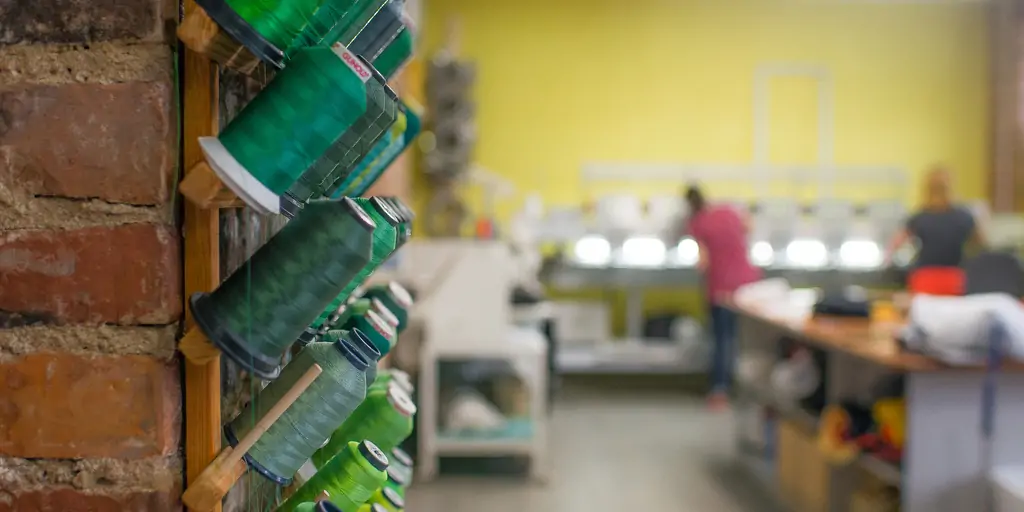
Starting your own clothing company is an exciting prospect. However, like entering into any other industry, it can be particularly daunting – especially if you’re not used to running your own business and are starting out for the first time on your own.
Clothes manufacturing is an extremely competitive market to emerge into, but if you find the right segment with an audience that has a true need for the product, then you could be onto a winner. The clothing manufacturing and branding industry may seem like glitz and glamour on the surface, but you’ll have to put in the hard yards before it’s all catwalks and big photoshoots.
So, what does it take? Well, this blog post will run through everything you need to know about how to start a clothing manufacturing company.
We’ll cover:
Form Your Brand
In the world of fashion and clothes manufacturing, the importance of your brand identity can’t be understated. Your brand identity is how people portray your brand and should embody the main attributes of your business. Clothing choices are very important to people. It’s a way of expressing who they are, so the brands that people wear become an extension of who they are.

So when you’re first starting out your clothing manufacturing business, ask yourself the following questions:
- What identity do you want your clothing manufacturing company to project?
- Who will want to wear your clothes?
- What can customers get from your manufacturing company that they won’t be able to get elsewhere?
- Is my clothing unique?
The answers to these questions will form the core of your brand. So, when it comes to making future brand ideas, you should address these first to make sure that you’re still on-brand with your decision.
Having a clear brand identity that resonates with the audience is the key to success in the industry. It’s an exciting, fast-paced market so it’s only natural that you’ll have a lot of ideas flying around. But to be as successful as possible, especially when starting out, you need to carry out as much audience research as you can. That way, you form a brand that they’re bound to love.
Consider the Main Costs and Outgoings
When starting your clothes manufacturing business, it’s important that you crunch the numbers and work out what your costs are going to be. Of course, it’s easy to get excited about the incomings and revenue, but without forecasting your costs you’re not going to have an idea of any profit margins or how much you’ll make month on month.

For a clothing manufacturer, the main costs and outgoings are:
- Your brand design – logos, marketing and your website.
- Any license or permit fees.
- Premises rent.
- Infrastructural costs – phone and internet.
- Marketing and advertising costs.
- Equipment – for example, embroidery machines and printers.
- Raw materials.
- Staff wages and salaries.
Running a small business isn’t cheap, but providing you invest the right amount of time and passion into it, it can be very rewarding.
Workout Your Pricing Strategy
Firstly, to set an accurate and realistic pricing strategy, you’ll have to know what your cost per unit (CPU) is. Your CPU is just your starting point though. Obviously, you’re going to have to factor more than just this into your pricing, otherwise, you wouldn’t be making any profit on your products and it’d be hard to sustain your business on this model.
You need to be aware of what your competitors are charging. There’s so much choice for the shopper that if your products are far too overpriced, they’ll simply switch to your competitors for a cheaper price point. You may feel that your products are worth more than your competitors – and that’s ok. But if you’re unaware of what your competitors are charging, you may miss the mark entirely.
Be sensible with your pricing – if your product is premium and costs more to manufacture, then if you price it too low you’ll make a loss. It’s easier to drop the price of something once you’ve started your business than it is to raise it.
Build a Web Presence
A website is one of the greatest ambassadors for your clothing manufacturing brand. It’s where a lot of people will first discover your business, so you need to make sure that it drives home your core beliefs and sells your brand well. Visitors should be able to recognise your brand as soon as they land on your pages.

To project your brand’s voice and identity, follow these simple suggestions:
- Use your typical brand colours.
- Feature your logo and any slogans throughout.
- Write copy with your typical target audience in mind – always!
- Showcase your manufacturing capabilities.
A strong website will not only raise brand awareness and show your customers what you have to offer, but it’ll also lend credibility and develop a trusting relationship between both parties. After all, if a visitor trusts your brand, the chances of them returning and repeat purchasing increases massively too. They’ll become loyal brand advocates as well as customers.
Choose Your Industry Niche
What kind of clothes are you going to make? When you’ve decided on what industry you’re going to venture into, it’s time to decide on your niche. There’s no point simply making the same clothes as a lot of the other competitors in the market. Not only will you be less likely to get noticed, but it’ll also be so much harder to find any real success in a saturated market.
Obviously, you’re not going to be able to cater to everyone’s needs. That’d be too time-consuming and too expensive. So, clothing manufacturing stores are more likely to succeed if they design specific products for specific people. When you’re deciding on your core audience is, you should always consider what the key products of your range are going to be.
Some clothing manufacturing niche examples are:
- Women’s dress clothes.
- Men’s sportswear.
- Swimwear.
- Sports clothing.
You should be passionate about your niche. If you’re not, it’ll be blatantly obvious in your efforts. Pick something that you love and give it your all.
Plan Your Manufacturing Process
You’re not going to be able to manufacture every product on your own by hand, that would be unrealistic and unsustainable for your business. So, you need to consider what equipment you’ll need, whether you’ll need to recruit extra members of staff and whether training will be required to meet new processes. For example, if you needed to buy an embroidery machine, then would you require training to be able to operate it?
Your manufacturing process is vital to the success of your business. If you don’t have the right system in place, then you’re not going to be able to meet the demands of your customers. And quite simply, if you can’t meet the demand of your customers, then you’re going to struggle to turn them into brand advocates.
It might be that you aren’t skilled enough to carry out the necessary jobs, so you may have to look to outsource professionals. This isn’t a problem and can often be a solution for businesses who don’t want to or can’t afford to splash out on a full-time salary for a new member of staff.

Create Your Sales Plan
You could manufacture the most premium clothes in the world, but if you don’t sell them properly and appeal to your target audience’s needs correctly, then you’re likely to fail in doing so. So, you need to decide how you’re going to sell your clothes once you’ve made them. Will it be out of a brick and mortar store? Or, an online shop?
Selling your clothes online is a cheaper alternative and less labour intensive than setting up your own physical store. You don’t have any monthly rent to pay and it’s straightforward to set up an eCommerce selling platform too – so it couldn’t be easier or more convenient really.
However, is it suitable for if you’re planning on expanding and growing? Unfortunately not. Plus, where will you store your products and base your machines? For example, embroidery machines can be pretty big, so need a lot of room to be stored and to have the ability to be run without issue too.
Brick and mortar stores are great for attracting footfall and extra customers to your business – but the shop needs to be in the right place, otherwise, it’ll be wasted. For example, if your store is specialising in sportswear, there’s no point in choosing a location that’s renowned for women’s ball gowns is there? It simply wouldn’t work.
Spread the Word With a Marketing Plan
Now you’ve got everything in place, it’s time to spread the word and get your brand out there. And the way to do that is to decide which marketing channels you’re going to use to promote your new clothing manufacturers. New businesses are exciting, so make sure that you drum up an apt level of excitement that fully engages potential customers.
A lot of businesses tend to use a hybrid of traditional and modern marketing techniques. Flyers and leaflets in similar shops or the local area, brochures that showcase their range of products and TV and radio adverts are amongst the more common traditional methods. Whereas, digital marketing efforts such as content marketing, SEO and social media campaigns are modern ways of promoting your brand.
Without a marketing plan, your efforts will all be pulling in different directions, which will result in your campaign not being as successful as it could be. All different mediums should complement each other and should all work together to get to the same goal. Without a clear objective and set of goals, your efforts become confused.

Spread the Word With a Marketing Plan
Without the right equipment, you won’t have a product to sell – which is why it’s so important that you choose the right set for your business. Clothing manufacturers can come under seriously intense demand from customers, so make sure that you factor that into your decision when looking to kit your business out.
One of the main pieces of equipment that you’ll need is an embroidery machine. Crests, logos and slogans are often needed to personalise workwear, sports kits and clothing and personalised t-shirts too. Embroidery machines come in single-heads and multi-heads, but which one will be right for your business?
To help you, we’ve created a free comparison that contains everything you need to know about the two different types of machine.
Download it today.